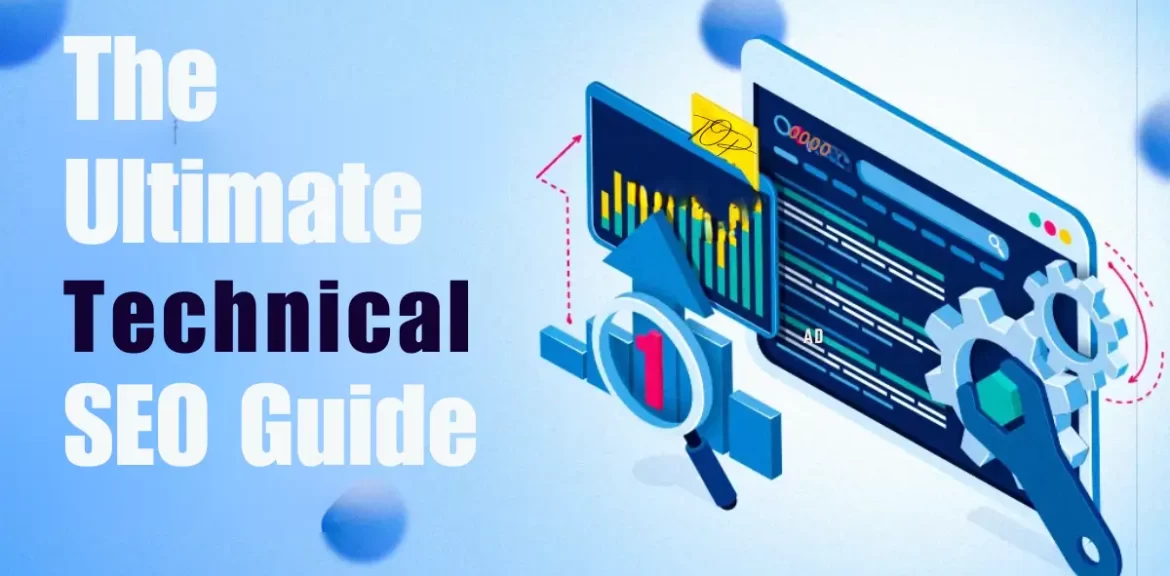Technical SEO Guide ensures your website performance with a set of parameters. However, this will help you to manage your website traffic. In the dynamic world of digital marketing, technical SEO guide, plays a vital role in ensuring your website’s success. While the content and user experience are critical components, technical SEO is the backbone.
However, it supports your site’s visibility and search engine rankings. In this comprehensive guide, we will explore the key elements of a technical SEO Guide. As it provides actionable insights to help you optimize your website for search engines effectively.
The Fundamentals of Technical SEO Guide
In technical SEO fundamentals, website and speed performance is one of the most important aspects of technical SEO. As Google and search engines prioritize fast-loading websites as they deliver a better user experience. However, slow-loading pages can lead to higher bounce rates and lower search rankings. To enhance your website’s speed and performance, perform the following steps:
1. Optimize Images
Compress images without compromising quality to reduce their file sizes.
2. Enable browser caching
Leverage caching to store frequently accessed elements, reducing loading times for returning visitors.
3. Minimize HTTP requests
Merge CSS and JavaScript files and eliminate unnecessary elements to reduce the number of observer requests.
4. Use Content Delivery Network
Distribute your website’s assets across multiple servers globally to decrease latency and improve loading times for users worldwide. However, with the mobile-friendly design with the majority of online searches.
However, it is coming from mobile devices, having a mobile-friendly website is no longer an option, it’s a necessity. Furthermore, a responsive design ensures that your site adapts seamlessly to various screen sizes. As it creates a positive user experience and increases the chances of higher rankings in mobile search results.
5. Website Architecture and URL Structure
A well-organized website structure not only makes navigation easier for users but also aids search engines in crawling and indexing your content effectively.
Keep these tips in mind to improve the technical SEO guide
- Create a logical Hierarchy: Organize your content into categories and subcategories to create a clear and intuitive website structure.
- Use Descriptive URLs: Optimize your URLs by including relevant keywords that describe the page’s content, making it easier for search engines and users to understand its purpose.
- XML sitemap: An XML sitemap is a list of all the pages on your website that you want search engines to crawl and index. It acts as a roadmap, guiding search engine bots to discover and understand the structure of your site. Regularly update and submit your sitemap to the Google search console and other webmaster tools to ensure efficient crawling and indexing.
- SEO-friendly Architecture: You first must create an SEO-friendly site architecture. However, the way pages are linked together. Because an effective site structure to organise. In addition, it will improve website traffic.
- Robots.txt File: This kind of file informs search engine crawlers which pages or sections of your website should not be crawled or indexed. Properly configuring this file is crucial to avoid indexing duplicate content, sensitive information, or irrelevant pages. Exercise caution when using this file, as incorrect settings can inadvertently hide essential pages from search engines.
- Canonicalization: This is the process of selecting the preferred version of a webpage when multiple versions with identical or similar content exist. This helps avoid duplicate content issues, which can harm your search rankings. Use canonical tags to indicate the preferred version of each page and consolidate link equity to the right page.
- HTTPS and SSL Securing your website with HTTPS and an SSL certificate is not just essential for protecting user data but also impacts SEO positively. Google considers HTTPS as a ranking factor and provides a small ranking boost to secure websites. Additionally, users are more likely to trust and engage with secure sites.
Conclusion
Mastering a technical SEO guide is a critical step towards improving your website’s search engine visibility, user experience, and overall performance. By optimizing website speed, ensuring mobile-friendliness, maintaining a well-structured architecture, and implementing other technical best practices, you lay a strong foundation for your online success.
Remember, SEO is an ongoing process, and search engines continuously update their algorithms. Stay informed about the latest trends and best practices to keep your website at the top of search results and ahead of the competition. With this ultimate technical SEO guide as your reference, you are well-equipped to navigate the ever-changing landscape of SEO and drive organic traffic to your website.
FAQ’s
Firstly, submit your sitemap to Google, Then, check the site structure, it must be SEO-friendly. However, it will improve the website’s speed. Ensure the website should be mobile-friendly. Once you have been done with all the steps, make sure the content is not duplicated.
The technical SEO guide defines anything that makes your website easier for search engines to crawl and index and to help your pages rank highly.
Yes, it is necessary for the technical SEO guide. However, it takes care of HTML tags should always be on your SEO web checklist.
The answer is Yes, Page speed is the task of the technical SEO that impacts the user experiences in both ways positive as well as negative.





